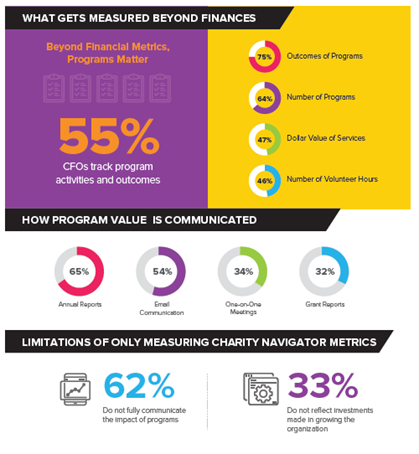You don’t want to be the last in line when it comes to modernizing your organization’s processes. Staying up-to-speed with what is on the horizon allows your nonprofit to master and measure mission impact effectively.
Infrastructure needs are changing and it’s critical that you have a solution that integrates fundraising, finance and program metrics data to display outcomes and chart the path ahead.
Nonprofit decision makers know their hurdles and what tools they need to succeed. That’s why NetSuite asked them directly.
NetSuite is a unified ERP business management solution for nonprofit organizations to manage their entire end-to-end operations with a single, flexible and powerful application.
Movers. Shakers. Policy Makers.
A growing number of grant makers, nonprofit executives, watchdog agencies and technology companies are working together to create new technology, measurement tools and funding models to understand the infrastructure needs of nonprofits.
The following technology trends will be the hallmark of the next generation of technology.
Dollars to Outcomes
Finance, program and fundraising teams are unique functions within a nonprofit that each have specialized business processes and separate databases. However, when a funder is approached for a grant, all three functions must provide data that the funder uses to assess risk and worthiness.
For mission delivery metrics, technology must be able to connect the dots between fundraising, finance and program metrics, which means integration points between the data. Technology companies are responding by collaborating with nonprofits and grant makers to build unified datasets and data models to trace dollars to program results.
Real Needs, Real Impact
NetSuite surveyed 353 nonprofit executives and their findings revealed that the three primary pain points for nonprofit decision makers are financial stability, staff attrition and donor retention. Technology companies and funders can assist by collaborating to donate technology to nonprofits and build mission impact with pro bono services and capacity building resources, such as technology workforce development for underserved communities.
Build a Technology, Funder, Nonprofit, Program Beneficiary Ecosystem
Smart phones, cloud platforms, digital payment tools, social media and video streaming have upended business-as-usual, and the nonprofit sector is no exception. Together, an ecosystem of funders, program beneficiaries, nonprofits and technology companies can usher in a new era of unprecedented, positive social change.
Hundreds of governments, disaster relief nonprofits and individuals went to Haiti in humanitarian response to the 2010 earthquake, and the Red Cross was among them and was later singled out for its tepid response to catastrophic destruction. In the nine years since that disaster, the organization has changed. While it can’t wholly correct the errors from 2010, it is now using new methods to demonstrate transparency and impact, and it’s engaging donors in new ways to ensure accountability.
The voices of nonprofit executives surveyed by NetSuite reflect important viewpoints that shape how technology can be used to build products and services to help nonprofits master and measure mission impact. As we move toward a world of social collaboration, the survey results demonstrate how to shift the conversation from judging nonprofits for their perceived inadequacies to transforming their operations to achieve results.

What Does NetSuite Recommend?
Becoming an outcomes measurement champion within your nonprofit is dependent on your role. Let’s explore that briefly.
Program Managers: Educate Your Organization On Program Evaluation Principles
Because finance staff members generally focus on numbers only, they’re unlikely to be familiar with program logic models (the graphic representations of the linkages between program activities and the changes those activities will produce).
Logic models, or “theories of change,” help stakeholders such as funders, boards, program staff and executive directors understand whether there is any “logic” to your programs—whether the connections between what you do and what you hope to achieve make sense. These kinds of models provide greater clarity about your mission and tell the story of your program.
Finance Managers: Review and Revise Your Financial Transaction Data Structures
To correlate program activities with revenue and expenses, the appropriate data structure needs to be in place. Your accounting system must be set up to tag expense and revenue transactions with the appropriate dimensions at the line level, revenue type (donation, pledge, fee for service), restriction status (with or without donor restrictions) and fund/program.
Nonprofit outcome KPIs are based on aggregate transactions using the source (revenue type, restriction) and use of funds (fund/program). These dimensions, also called segments or tags, form the basis of modern accounting structure, replacing the long accounting code strings that were used in the past.
For nonprofits, this is a critical feature in outcomes measurement because the aggregation of revenue and expense transaction dimensions are what allows visibility into program sustainability and financial transparency reports.
Executives: What’s On the Horizon
As nonprofits get better at identifying their programmatic and financial outcomes, the next stage is to correlate program service delivery to financial data. The survey results show that many nonprofits aspire to do this, but don’t yet have the infrastructure in place to implement it.
Need Help?
If you’d like to learn whether NetSuite could be a fit for your nonprofit, contact us online or give us a call at 410.685.5512 to schedule a demo.


